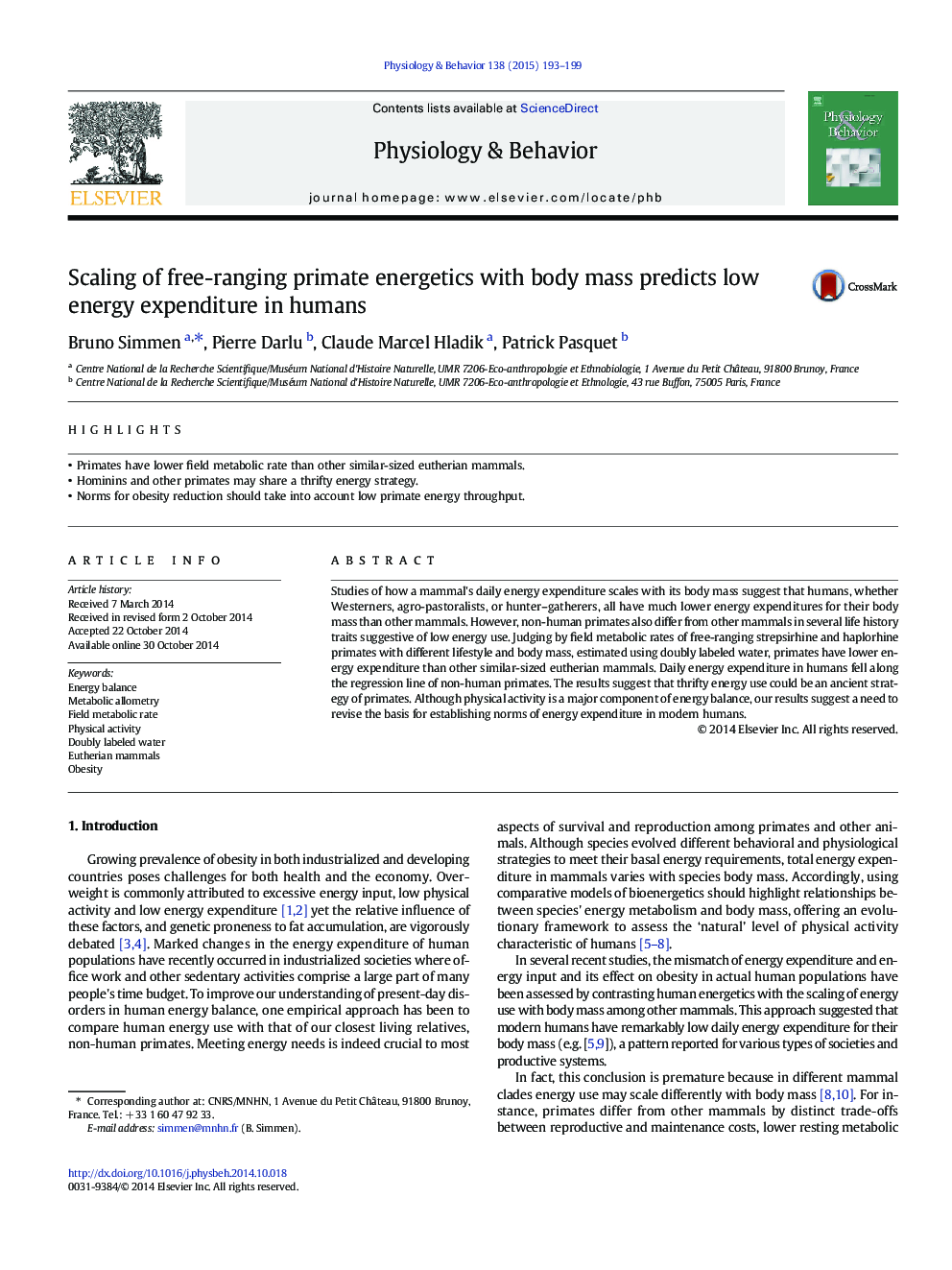| Article ID | Journal | Published Year | Pages | File Type |
|---|---|---|---|---|
| 2844211 | Physiology & Behavior | 2015 | 7 Pages |
•Primates have lower field metabolic rate than other similar-sized eutherian mammals.•Hominins and other primates may share a thrifty energy strategy.•Norms for obesity reduction should take into account low primate energy throughput.
Studies of how a mammal's daily energy expenditure scales with its body mass suggest that humans, whether Westerners, agro-pastoralists, or hunter–gatherers, all have much lower energy expenditures for their body mass than other mammals. However, non-human primates also differ from other mammals in several life history traits suggestive of low energy use. Judging by field metabolic rates of free-ranging strepsirhine and haplorhine primates with different lifestyle and body mass, estimated using doubly labeled water, primates have lower energy expenditure than other similar-sized eutherian mammals. Daily energy expenditure in humans fell along the regression line of non-human primates. The results suggest that thrifty energy use could be an ancient strategy of primates. Although physical activity is a major component of energy balance, our results suggest a need to revise the basis for establishing norms of energy expenditure in modern humans.
